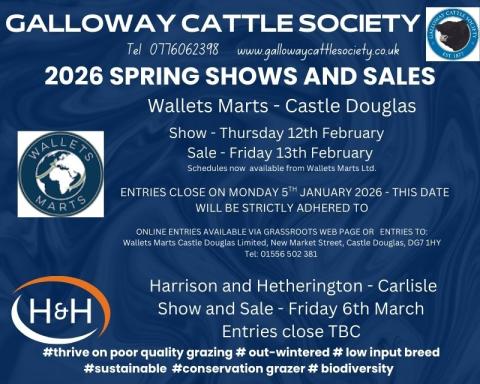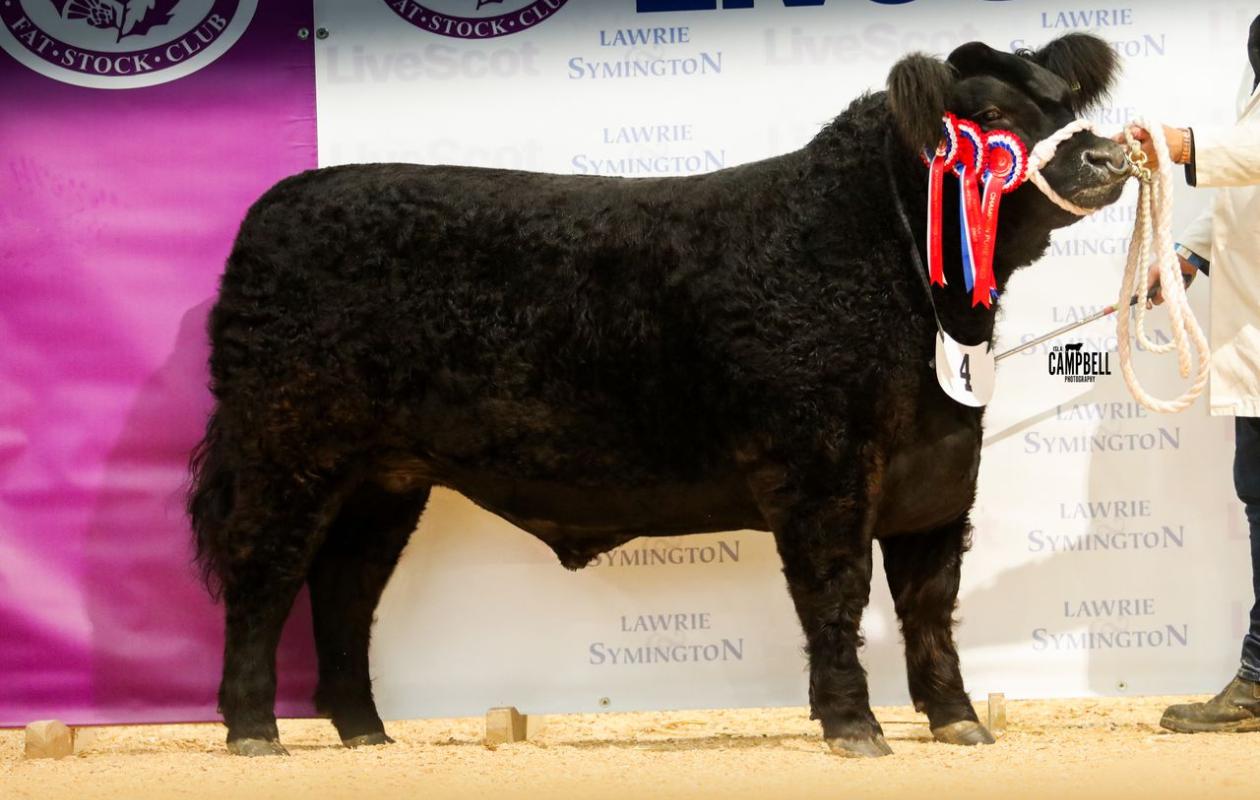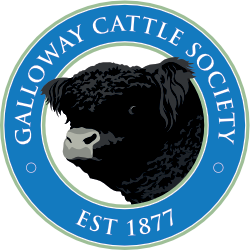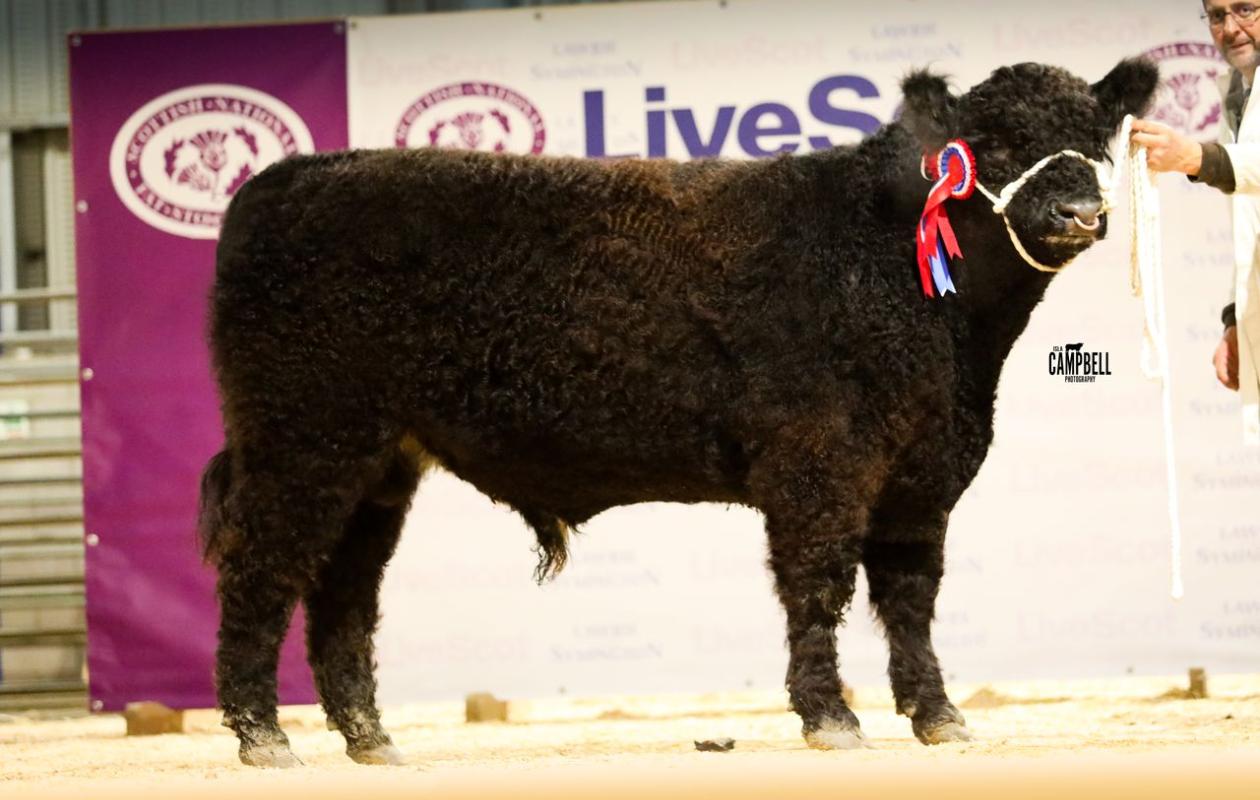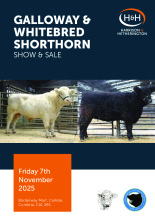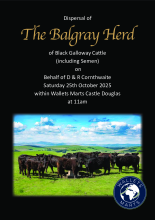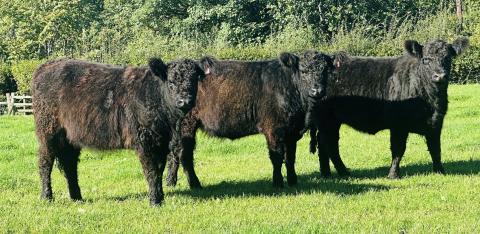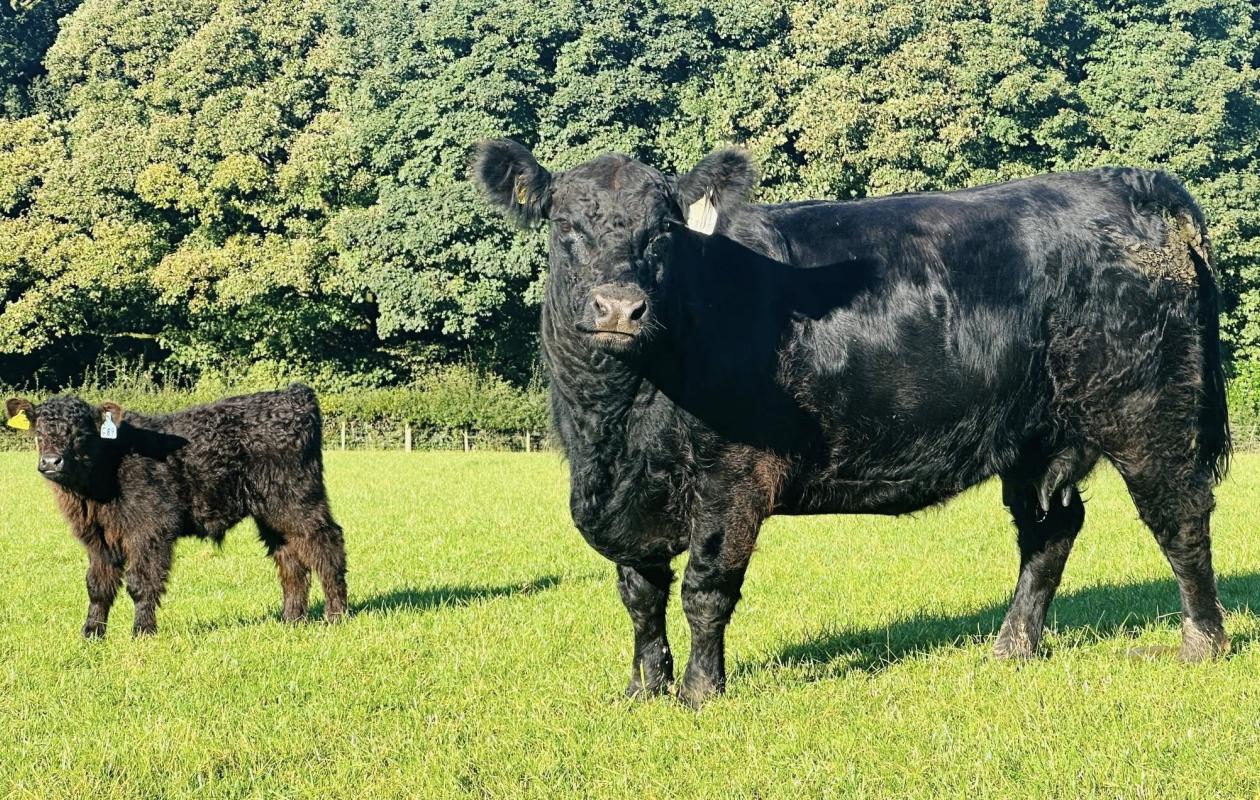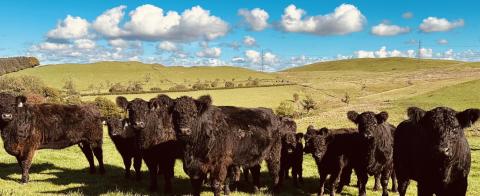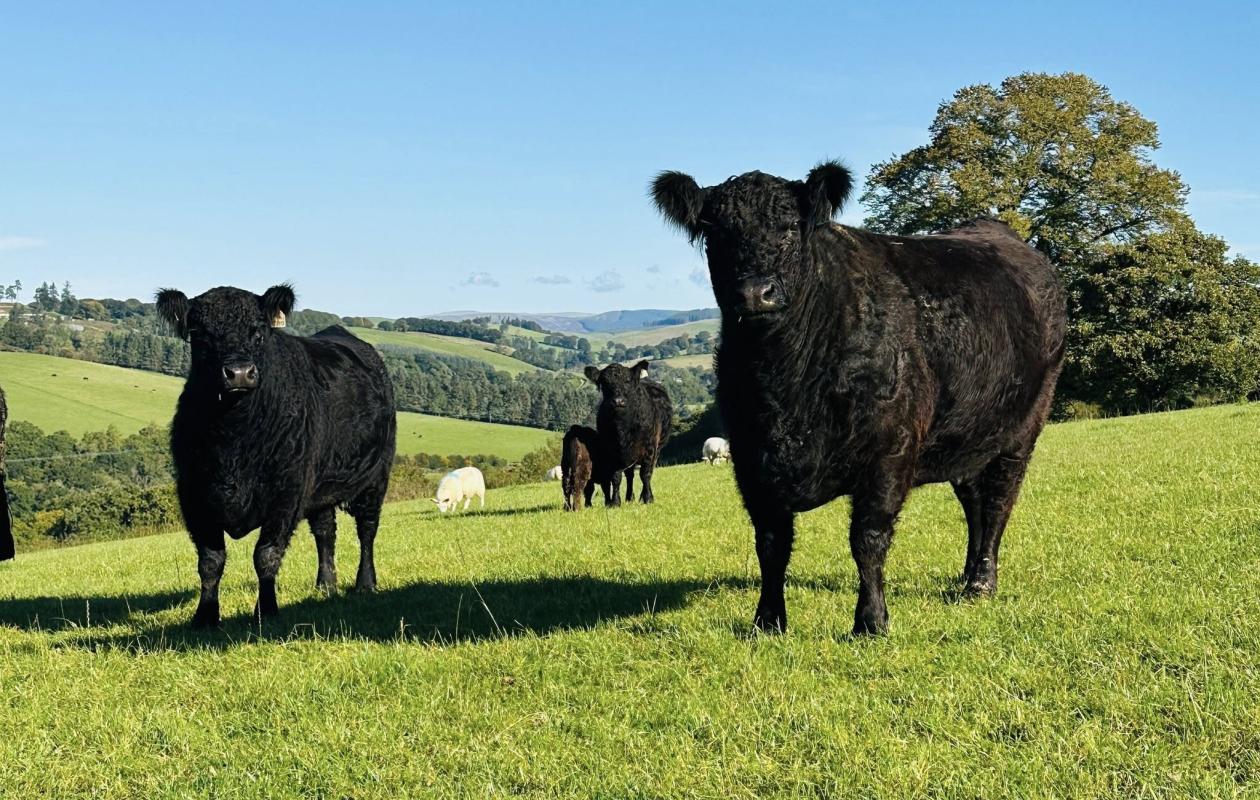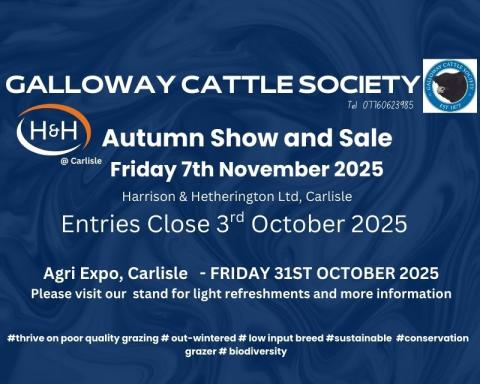2025 On-Farm Herd of the Year - Results
The 2025 On-Farm Herd of the Year celebrates the dedication and achievements of Galloway cattle breeders across the UK and Ireland. This year, 24 herds took part in the assessment, representing three regions: Scotland and Northern England, Ireland and the Rest of England and Wales.
Each herd was reviewed for its breeding progress, herd health, productivity, and overall management. The results reflect the hard work, innovation, and commitment of Galloway breeders who continue to uphold the breed’s reputation for quality, resilience, and performance across a wide range of farming systems.
We would like to extend our congratulations to the following breeders who have received awards in recognition of their outstanding performance and contribution to the Galloway breed.
Our grateful thanks to our sponsors:-
Galloway & MacLeod Ltd, Davidson Animal Feeds, Starlyne/ MacMin Ltd, Wallets Marts Ltd, Fane Valley Stores, Ballymena Livestock Mart, Moore Concrete, Steele Farm Supplies
And our judges:-
Mr Andrew McConchie, Mr George Somerville and Mr Mark de Winter Smith
Results
Scotland and Northern England
Kindly judged by Mr Andrew McConchie
Small herd 0-9 cows
Best Small herd
1st Dexter and Carolyn Logan - Rogan
2nd A & C Thornton - Stainton
Best Bull
1st T E Stephenson - Highwayman of Over Barskeoch
2nd A & C Thornton – Joker of Whitehill
Best Cow and Calf (pure or crossbred)
1st D & L Watret – Blackcraig Rose with pure calf at foot Criffelview Rosie
2nd A & C Thornton – Barlaes Black Ice with Black Ice Tracy of Stainton
Medium Herd 10-25 cows
Best Medium Herd
1st Glenrath Farms Ltd
2nd R & M McIntosh – Huntly
Best Bull
1st Glenrath Farms Ltd – Blackcraig Dyker
2nd James Campbell – Newton Cracker
3rd M C McCart – Troloss Matador
Best Cow and Calf (pure or crossbred)
1st Glenrath Farms Ltd – Troloss Inka with Glenrath Inka
2nd H Ryman & C Stead – Lady Polka of Fingland with twin calves
3rd James Campbell – Kypehill Avon with Kypehill Beta
Large Herd 26 cows and over
Best Large Herd
1st D & R Cornthwaite - Balgray
2nd Kilnstown Farms Ltd
3rd Andrew Tullie – Bowanhill
Best Bull
1st D & R Cornthwaite – Upbeat of Balgray
2nd Kilnstown Farms Ltd – Buccleuch Discovery
Best Cow and Calf (pure or crossbred)
1st Kilnstown Farms Ltd – Hilda 7th of Kilnstown with Limousin calf at foot
2nd D & R Cornthwaite – Solar eclipse of Balgray with Winter Eclipse of Balgray
Overall winners
1st Glenrath Farms Ltd - Glenrath
2nd D & R Cornthwaite - Balgray
3rd R & M McIntosh – Huntly
On Farm Herd of the Year competition – Ireland
Kindly judge by Mr George Somerville
Large Herd
1st Joe and John Smyth - Upper Buckna
2nd Barry and Brendan Douglas - Glenderg
Small Herd
1st Dessy Henry - Gruige
2nd Messrs T & K Madden - Ballyvaddy
3rd Mr Brendan O’Malley - Connemara
Best Cow
Dessy Henry with Barlaes Brownie 250th
Best Bull
B & B Douglas with Fionn Mac Cumhaill of Castlegore
Overall
1st Joe and John Smyth - Upper Buckna
2nd Barry and Brendan Douglas – Glenderg
On farm herd of the year competition - Rest of England and Wales
Kindly judged by Mr Mark de Winter Smith
Herd of the year
1st = Messrs NH & MJ Cole, Greenwell Farm, Yelverton
1st = Mr S Johnson, Oldfield Farm, Heswall, Wirral
3rd Messrs D & A Weeks, Pen Y Graig Farm, Llanelly Church, Abergavenny
